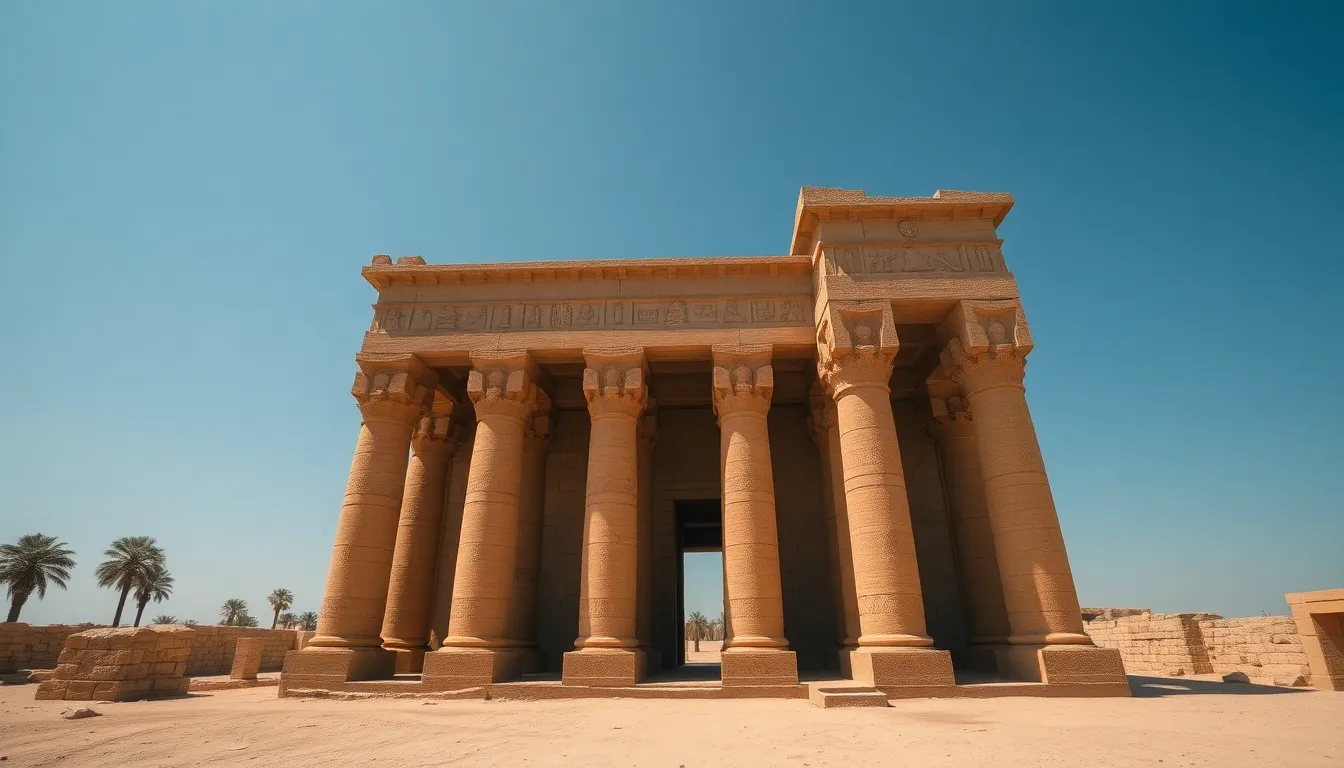The Temple of Dendera: A Marvel of Egyptian Architecture
I. Introduction
The Temple of Dendera, one of the best-preserved temples from ancient Egypt, is a stunning testament to the architectural and artistic achievements of the civilization. Located in the town of Dendera, approximately 2.5 kilometers from the Nile River, this temple complex was dedicated to Hathor, the goddess of love, beauty, music, and fertility.
Throughout history, the Temple of Dendera has held significant religious and cultural importance. It played a vital role in the spiritual life of the ancient Egyptians, serving as a center for worship and community gatherings. This article aims to explore the historical background, architectural features, artistic elements, cultural significance, archaeological discoveries, and modern relevance of this remarkable site.
II. Historical Background
The construction of the Temple of Dendera began during the Ptolemaic period, around 54 BCE, under the reign of Pharaoh Ptolemy VIII. However, the site itself has roots that date back to the earliest dynastic periods of Egypt, with earlier structures likely existing in the same location.
The temple is dedicated to Hathor, who was revered as a mother goddess and protector of women, children, and fertility. The religious practices associated with Hathor included music, dance, and various fertility rituals, which were integral to the culture of ancient Egypt.
As a place of worship, the Temple of Dendera served as a crucial center for the religious life of the community, where festivals and rituals were performed to honor the goddess and seek her blessings.
III. Architectural Features
The architectural design of the Temple of Dendera is a remarkable example of ancient Egyptian temple construction. The layout is organized in a traditional axial plan, which includes:
- A grand entrance with massive stone columns
- A hypostyle hall adorned with intricate carvings
- A sanctuary dedicated to the goddess Hathor
One of the most striking features of the temple is its columns, which are decorated with Hathor heads and lotus flowers. These columns symbolize fertility and rebirth, reflecting the goddess’s association with life and joy.
The temple’s roof is also unique, featuring an astronomical ceiling with representations of the night sky, including various constellations and celestial bodies. This ceiling serves both a decorative and symbolic purpose, linking the temple to the cosmos and the divine.
IV. Artistic Elements
The Temple of Dendera is renowned for its artistic elements, particularly its frescoes and reliefs that narrate stories from mythology and religious practices. The walls of the temple are adorned with colorful paintings that depict:
- Scenes of the goddess Hathor and her worshippers
- Mythological narratives involving other deities
- Rituals and ceremonies performed in her honor
Iconography associated with Hathor is prevalent throughout the temple, showcasing her as a nurturing figure. Additionally, the zodiac reliefs found in the inner sanctum are significant, providing insights into ancient Egyptian astronomy and their understanding of the heavens.
V. Cultural and Religious Importance
The Temple of Dendera was not only a place of worship but also a vital center for pilgrimage. Ancient Egyptians from various regions would travel to the temple to participate in festivals dedicated to Hathor, which included:
- Music and dance performances
- Processions and offerings
- Rituals aimed at fertility and healing
The influence of the Temple of Dendera extended beyond its time, impacting later Egyptian architecture and culture. The design elements and artistic styles seen in Dendera can be observed in subsequent temple constructions and are a testament to the enduring legacy of ancient Egyptian civilization.
VI. Archaeological Discoveries
Excavations at the Temple of Dendera have yielded a wealth of archaeological findings, shedding light on the temple’s history and its role in ancient society. Key discoveries include:
- Inscriptional texts that provide insights into the rituals performed
- Artifacts related to daily life and religious practices
- Evidence of earlier structures that predate the existing temple
Preservation efforts at the site have faced numerous challenges due to environmental factors and human activity. However, modern research techniques and conservation initiatives aim to protect this ancient wonder for future generations. Insights gained from these studies continue to enhance our understanding of ancient Egyptian culture and religion.
VII. Tourism and Modern-Day Relevance
Today, the Temple of Dendera stands as a popular tourist destination, attracting visitors from around the world who seek to experience its historical and architectural grandeur. The site offers educational programs and guided tours that delve into the temple’s rich history and significance.
Tourism has a dual impact on the preservation of the temple. While it provides essential funding for conservation efforts, it also poses challenges related to wear and tear. Balancing the needs of tourism with preservation is critical to maintaining the temple’s integrity and protecting its cultural heritage.
VIII. Conclusion
In summary, the Temple of Dendera is a remarkable expression of ancient Egyptian architecture and spirituality. Its historical significance, intricate design, and artistic features demonstrate the advanced understanding and reverence the ancient Egyptians had for their gods and the cosmos.
The enduring legacy of Dendera serves as a reminder of our shared human history and the importance of protecting our architectural wonders. As we continue to explore and appreciate these ancient sites, it is vital to advocate for their preservation, ensuring that future generations can also experience the beauty and significance of the Temple of Dendera.




